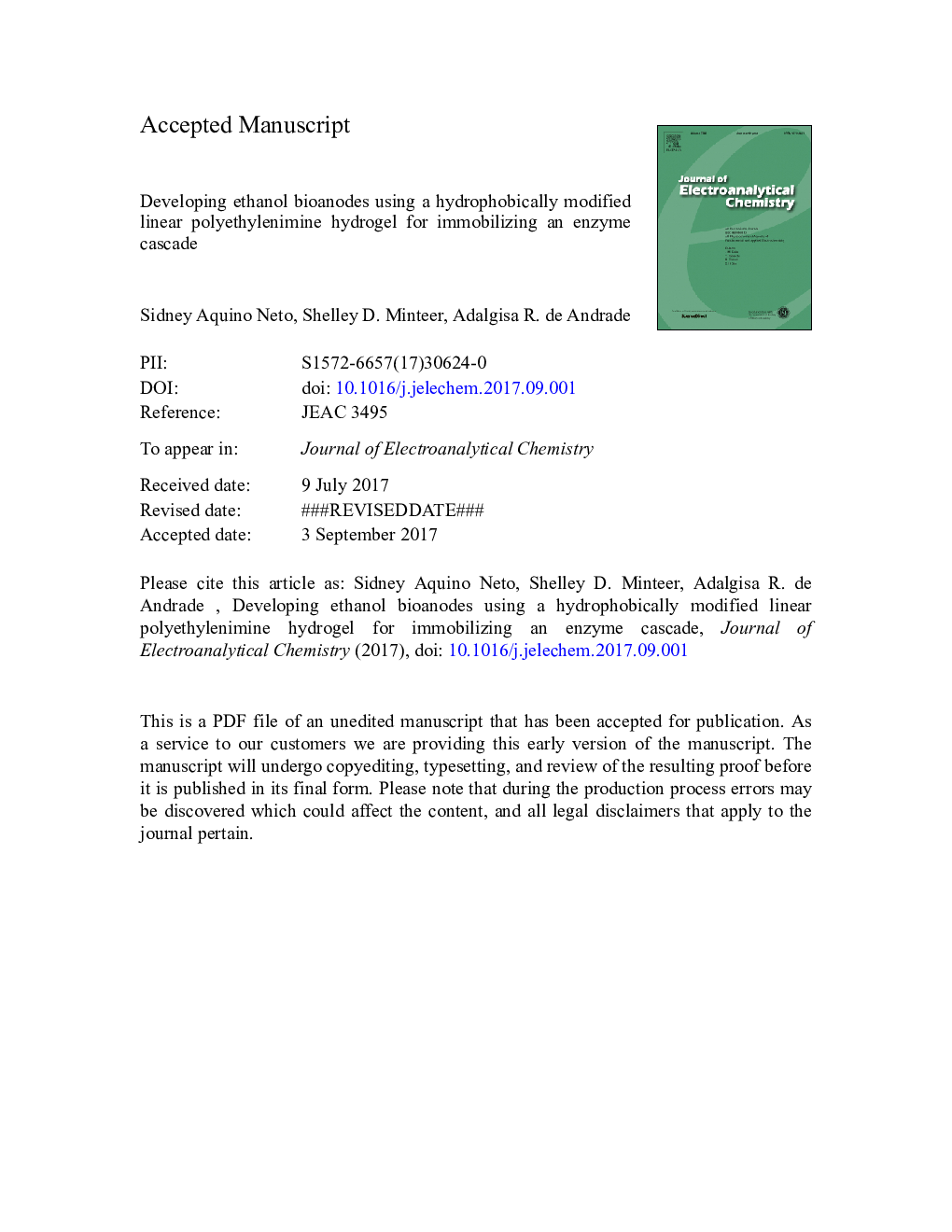| Article ID | Journal | Published Year | Pages | File Type |
|---|---|---|---|---|
| 6662080 | Journal of Electroanalytical Chemistry | 2018 | 27 Pages |
Abstract
Considering the importance of immobilizing dehydrogenase enzymes for bioelectronics, the focus of this paper is to obtain an enzymes cascade for ethanol bioelectrooxidation onto a carbon paper support using a hydrophobically-modified linear polymer of ethyleneimine (LPEI) as the immobilization matrix along with ethylene glycol diglycidyl ether (EGDGE) as the cross-linking agent. In the first stage of ethanol bioelectrooxidation, the biofuel cell tests show that the amount of the cross-linking agent employed in bioanode preparation directly affects their overall bioelectrocatalytic performance. In fact, much higher performance is observed for the bioanode prepared with an intermediate amount of cross-linking agent, reaching maximum current and power densities of respectively 12.5 ± 1.4 μW cmâ 2 and 150 ± 17 μA cmâ 2. In both the second and third steps of the ethanol oxidation cascade, several optimizations had to be performed in order to obtain a stable and functioning bioanode, but this work shows that the optimal crosslinking conditions are enzyme dependent. Although immobilization methodologies such as hydrogels have a wide application range in bioelectronics, the proportion between LPEI, EGDGE, and the enzymes being immobilized is quite important to obtain a functioning bioanode, particularly when a cascade of enzymes needs to be immobilized into this matrix.
Related Topics
Physical Sciences and Engineering
Chemical Engineering
Chemical Engineering (General)
Authors
Sidney Aquino Neto, Shelley D. Minteer, Adalgisa R. de Andrade,
